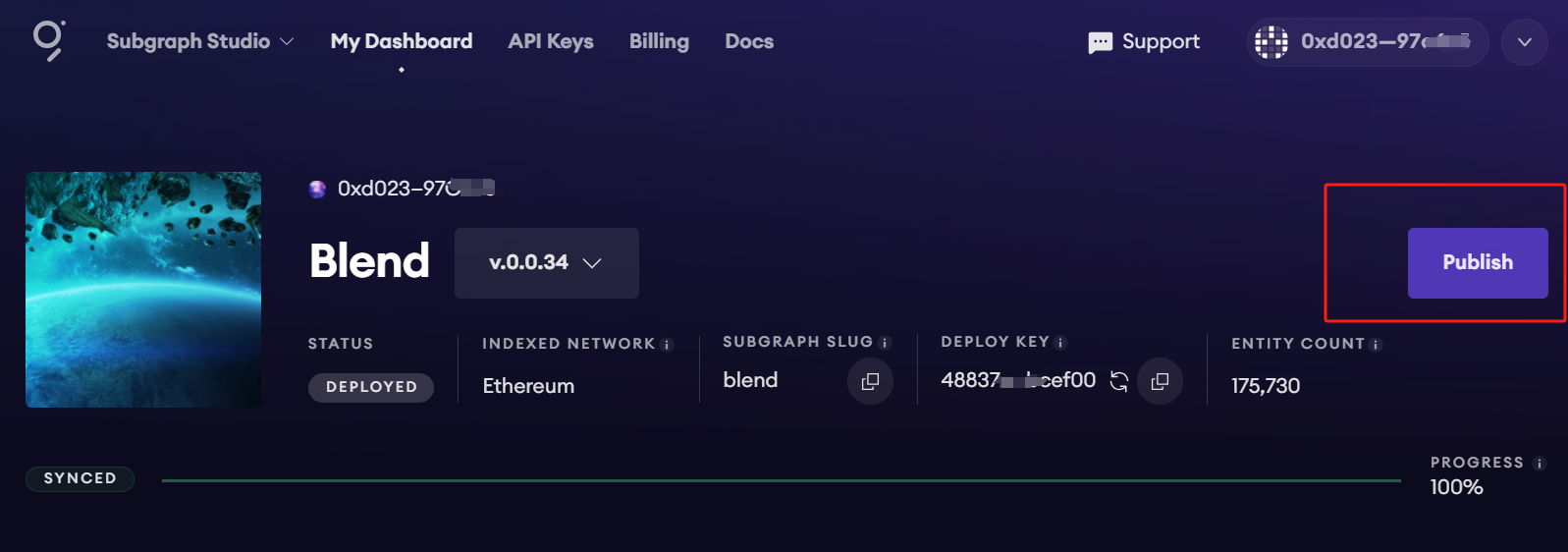Tranfer to The Graph
Reading time: 3 min
Quickly upgrade your subgraphs from any platform to .
- Use the same subgraph that your apps already use with zero-downtime migration.
- Increase reliability from a global network supported by 100+ Indexers.
- Receive lightning-fast support for subgraphs 24/7, with an on-call engineering team.
- Go to and connect your wallet.
- Click "Create a Subgraph". It is recommended to name the subgraph in Title Case: "Subgraph Name Chain Name".
Note: After publishing, the subgraph name will be editable but requires on-chain action each time, so name it properly.
You must have and a package manager of your choice (npm or pnpm) installed to use the Graph CLI. Check for the CLI version.
On your local machine, run the following command:
npm install -g @graphprotocol/graph-cli@latest
Use the following command to create a subgraph in Studio using the CLI:
graph init --product subgraph-studio
In The Graph CLI, use the auth command seen in Subgraph Studio:
graph auth --studio <your-auth-code>
If you have your source code, you can easily deploy it to Studio. If you don't have it, here's a quick way to deploy your subgraph.
In The Graph CLI, run the following command:
graph deploy --studio <slug> --ipfs-hash <your-subgraph-ipfs-hash>
Note: Every subgraph has an IPFS hash (Deployment ID), which looks like this: "Qmasdfad...". To deploy simply use this IPFS hash. You’ll be prompted to enter a version (e.g., v0.0.1).

To attract about 3 indexers to query your subgraph, it’s recommended to curate at least 3,000 GRT. To learn more about curating, check out on The Graph.
You can start any subgraph by sending a GraphQL query into the subgraph’s query URL endpoint, which is located at the top of its Explorer page in Subgraph Studio.

The query URL for this subgraph is:
https://gateway-arbitrum.network.thegraph.com/api/`**your-own-api-key**`/subgraphs/id/HdVdERFUe8h61vm2fDyycgxjsde5PbB832NHgJfZNqK
Now, you simply need to fill in your own API Key to start sending GraphQL queries to this endpoint.
You can create API Keys in Subgraph Studio under the “API Keys” menu at the top of the page:

Once you upgrade, you can access and manage your subgraphs in and explore all subgraphs in .